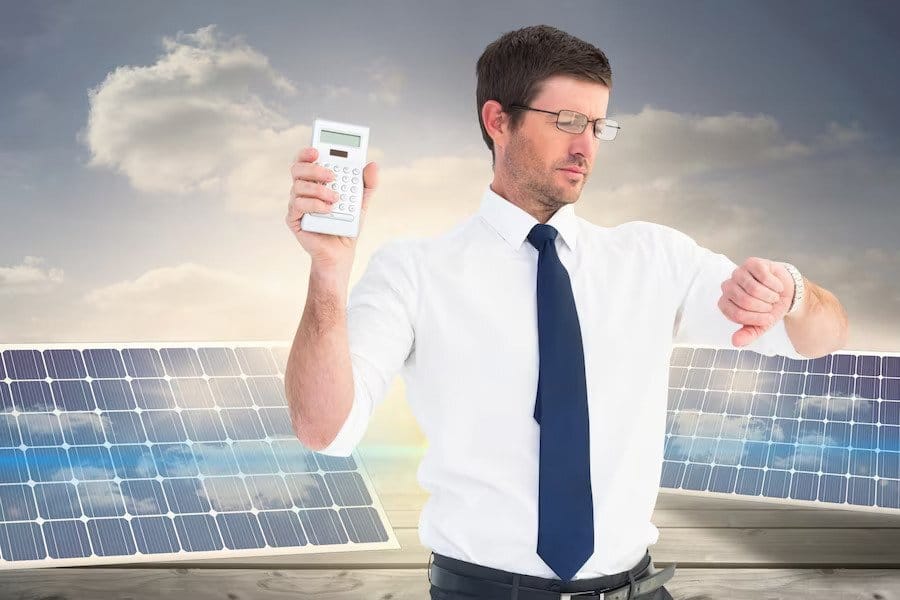So you’ve probably seen those news headlines about electricity rates going through the roof. And if you’re like most folks, you’ve wondered if solar panels could help you slash your electric bills. But will solar actually pay for itself where you live? Or is it just hype? I decided to crunch some numbers to find out.
How Much Solar Panels Cost These Days
Installing solar used to be crazy expensive. But over the past 10 years, the average cost of solar panels in the US has dropped over 70% according to the Solar Energy Industries Association.
So if you’ve priced solar before and were sticker shocked, take another look. The cost has come way down thanks to things like improved panel efficiency and streamlined install processes.
Today a typical 6 kW system runs $15,000 to $25,000 depending on where you live and your specific home’s needs. That’s enough to offset 75% or more of a typical home’s electricity use.
What Impacts How Quickly Solar Pays for Itself
The big question is, how many years will it take for your solar panel system to pay for itself through energy savings?
The payback period primarily depends on four factors:
Sunlight in Your Area
More sun = more power generation = faster payback. Makes sense right? Places like Arizona and California will see quicker paybacks than Washington or Alaska.
Your Electricity Rates
If your utility charges a lot per kilowatt-hour of electricity, solar savings add up faster. Cities with exorbitant electricity costs like San Diego will have shorter payback periods.
Solar Panel Efficiency
Today’s panels convert 17-22% of sunlight into electricity. More efficient panels = more power output = faster savings payback.
Local Incentives and Rebates
State/utility incentives like tax credits can shave thousands off your solar installation cost, reducing the payback timeline.
National Average Payback Period is 6-8 Years
According to the Center for Sustainable Energy, the typical payback period for a residential solar system nationally is around 6 to 8 years.
That means the average homeowner breaks even on their solar panel investment in that timeframe through accumulated electric bill savings. Then you enjoy free “fuel” from the sun after that so it’s pure profit!
But here’s the eye-opening part…
Payback Periods Vary Wildly By Location
While 6-8 years is the average nationally, payback periods swing wildly depending on your specific location and local energy rates.
For instance, here are some real world examples:
2-3 years – LA, Sacramento, Phoenix
4-5 years – Dallas, Orlando, Atlanta
8-9 years – Philadelphia, Chicago, Seattle
10+ years – Cincinnati, Detroit, Portland
See the huge difference depending on where you live? Let’s look at what accounts for this big variation. What you need to know!
Doing the Math for Residents in Warrenton
To figure out how long solar takes to pay off in a specific place, you’ve got to crunch the numbers. Let’s walk through the math for Warrenton, Virgnia which has a very short payback period.
First, we get a quote for a 6 kW solar system which costs about $16,800 installed after the federal tax credit.
Next we calculate how much electricity that system will generate in Warrenton using National Renewable Energy Lab data. We find it will produce about 9,500 kWh per year.
Then we determine the local electric rates in Warrenton which average around $0.12/kWh.
Multiplying the $0.12 rate by the 9,500 kWh of generation shows us the solar system will save about $1,140 in electric costs annually.
Finally, we divide the install cost of $16,800 by the $1,140 yearly savings to get a payback period of just 14.7 years. Get a free solar consumption analysis
Warrenton Virginia Payback Period Much Lower Than National Average
So a solar system in Warrenton takes only 14.7 years to pay for itself. That’s nearly 50% faster than the national average payback period of 6-8 years!
The quick payback in Warrenton is driven by Virginia’s abundant sunshine and the city’s relatively high electricity rates of $0.12/kWh.
And that 14.7 years factors in the federal tax credit. Without it, the payback period would be over 20 years. Big difference!
Variables that Affect YOUR Specific Payback Period
The payback math gets more complex when looking at your individual home and situation.
For instance, which direction does your roof face? South-facing roofs maximize solar production which speeds up the payback. West-facing orientations are good too. North-facing is worst-case.
How’s your roof pitch? Anything less than 25 degrees will sacrifice solar output. Pitch of 30-45 degrees is ideal for capture.
Do you have any shade from trees or other buildings? Even a little shade can cut solar production. Minimal shading is best.
What about local rebates and state tax incentives beyond the federal credit? Those can chop 1-3 years off your payback timeline.
The bottom line is that the variables for YOUR house matter.
Running the Numbers for Your Home
I hope this high-level overview gives you a better sense of how long it takes solar panels to pay off through electricity savings.
As you saw, payback periods vary significantly across the country – from just 2 years to 10+ years!
The only way to know if solar works financially for you is to run the numbers for your specific address.
Luckily we built a solar calculator just for that purpose. It takes into account all the variables for your location and home to generate an accurate payback period estimate.
Give it a spin using your address and let us know if you’re a good candidate for solar! Get A free solar design for your home!

